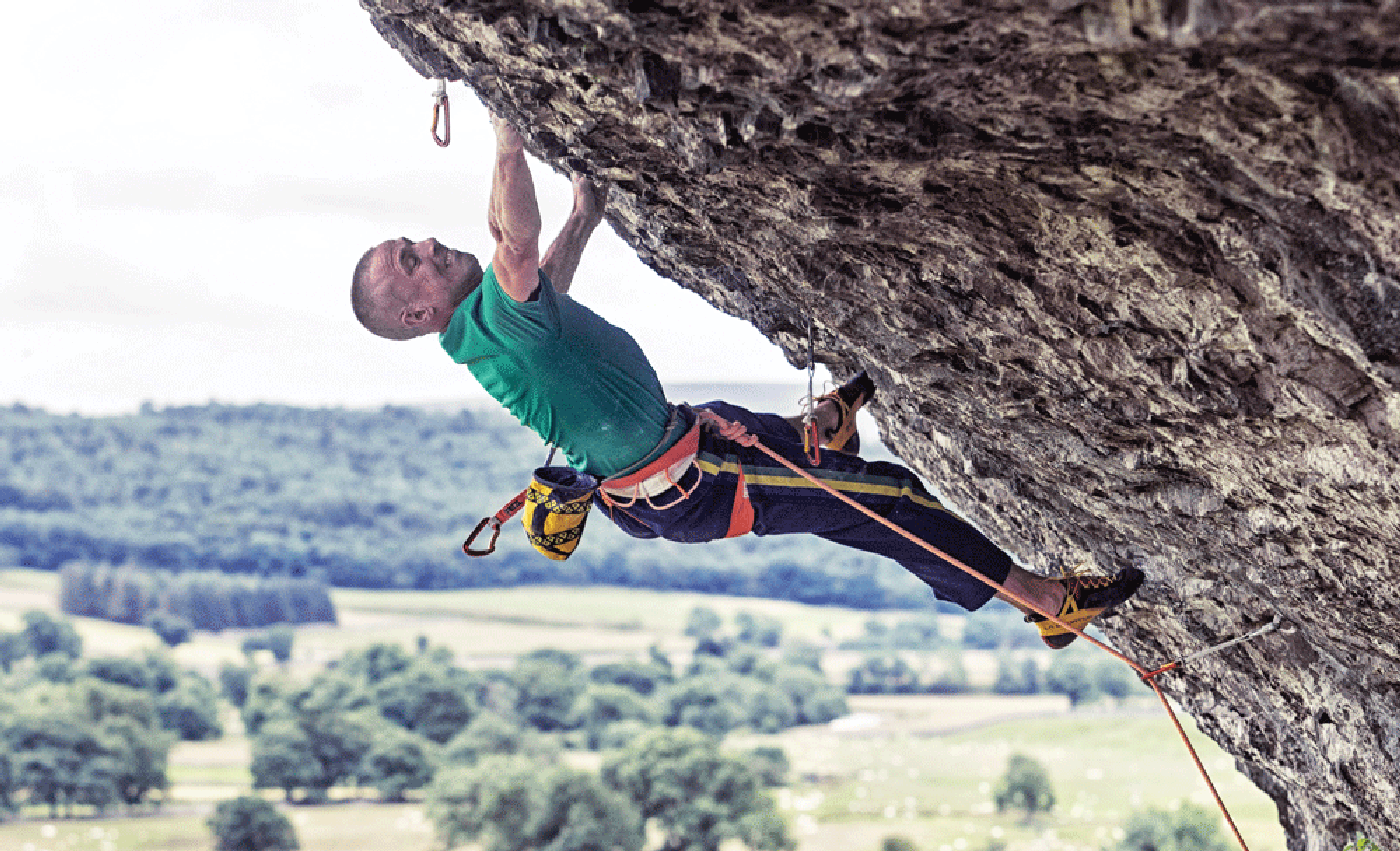Replicating Outdoor Cruxes Inside Will Boost Your Redpoint Limit

Neil Gresham made a simulation at home of the iron-cross crux of his Freakshow (8c/5.14b) at Kilnsey, England, and when he returned five months later the move “felt straightforward.” (Photo: lukasz warzecha)
If you can do all the moves on a project, it’s usually just a matter of time before it goes down. Stopper moves, though, are another thing entirely. A move you cannot pull is a barrier, and the main reason climbers throw in the towel on hard routes.
It takes time and dedication to build the strength to make impossible moves feel possible, but with specific training, you’ll be amazed at what you can achieve.
In the winter of 1991 the young Scottish climber Malcolm Smith launched an audacious campaign to make the second ascent of Ben Moon’s historic power route Hubble, the world’s hardest sport route at the time and possibly the first 9a/5.14d. I was Malcolm’s housemate in Sheffield, England, at the time. Having made a recon in the autumn, he realized that he needed a specific type of strength for the crux undercling move, so he built an exact replica of the move in our cellar. He then developed a system of holding the position statically and adding weight to his weight belt in small increments each session. He combined this plan with some heavy isometric dumbbell curls (holding the dumbbell statically). Not only did the program enable Smith to build precisely the type of strength required, it also helped him attain a rare level of mental focus and confidence. Sure enough, in the spring he made quick work of the route.
To my knowledge, Malcolm was one of the first to coin the technique of move simulation or refine it to such a high level. He attributed his success on Hubble to hard work and strategy rather than talent. To me, this is one of the most inspiring training stories, proving what can be achieved if you’re prepared to dig deep.
Over the years I have used variations on Malcolm’s method to train for diverse stopper moves.
Move-Simulation Training Tricks
Use a bouldering wall with a generous covering of holds to set your replica problem. Home facilities may be preferable to commercial gyms, as you can move holds to create exactly what you need. The difficulty of your replica should depend on how hard you find the actual move on the project. A good rule of thumb is to start with it fractionally easier (say half a V-grade), then use weight to make it more difficult.
Work within two variations. One method is to practice the moves. The other is to hold static positions throughout the move (calibrate so that you hit failure between three and eight seconds).
Add a quarter pound every second or third session. You’ll be astounded at how you can go from not being able to do the problem at the outset, to completing it several times with a hefty weight belt. Once you reach this stage, try linking several moves into it.
Include support training. Supplement with relevant exercises on the fingerboard, campus board or rings. You can do these on a different day or combine them with the boulder sessions.
After warming up, do some deadhangs where you focus on the hand grips you need. Or, if the move involves a powerful, dynamic slap, do a few maximum recruitment campus ladders.
Move on to the replica problem and, if relevant, finish with arm work such as lock-offs or offset pull-ups on a bar, or core work such as leg raises, front levers and the rings. You won’t need to do all these core exercises: Cherry-pick the most relevant ones.
These tactics may sound extreme, but they can work for anyone who really wants to explore your true limits in climbing. The results are even sweeter when they’re hard-earned!
Read All the DIY Articles
Make Hangboarding Harder or Easier
How To Get The Most Out Of Your Crack Machine
How To Build Cheap And Portable Crack Trainers
10 Ways To Repair Your Own Gear
Use Rubber Bands To Increase Safety
Build Your Own Extendable Bouldering Brush
Neil Gresham has been training and coaching for two decades. In 2001, he made the second ascent of Equilibrium (E10 7a/5.14X) on Peak District gritstone, and last year established Freakshow (8c/5.14b) at Kilnsey, also in the U.K. On October 13, 2016 he made the first ascent of Sabotage—an 8c+ (5.14c) extension to Predator (8b/5.13d) at Malham Cave, North Yorkshire, England. Sabotage is Gresham’s first climb of the grade.